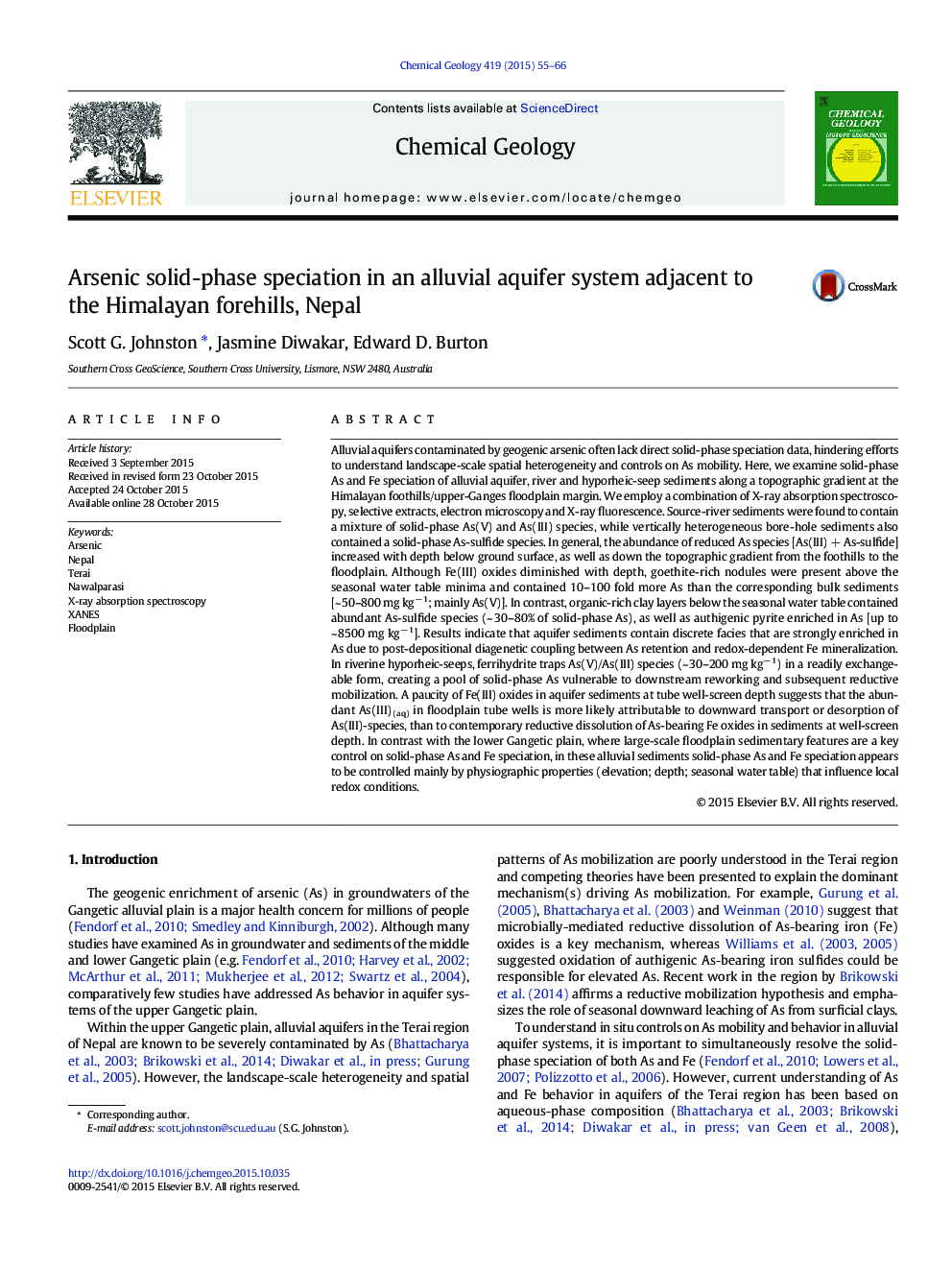| کد مقاله | کد نشریه | سال انتشار | مقاله انگلیسی | نسخه تمام متن |
|---|---|---|---|---|
| 4698401 | 1637555 | 2015 | 12 صفحه PDF | دانلود رایگان |
• We use XAS to explore solid-phase As and Fe speciation along a topographic gradient at the upper-Ganges floodplain margin.
• There are clear trends in As speciation along the toposequence and with depth below ground surface.
• Discrete facies are enriched in As due to post-depositional diagenetic coupling between As and Fe mineralization.
• As(aq) in tube wells is more likely due to downward transport/desorption of As(III)-species.
• Landscape-scale controls on solid-phase As and Fe speciation in this region contrast with the lower Gangetic plain.
Alluvial aquifers contaminated by geogenic arsenic often lack direct solid-phase speciation data, hindering efforts to understand landscape-scale spatial heterogeneity and controls on As mobility. Here, we examine solid-phase As and Fe speciation of alluvial aquifer, river and hyporheic-seep sediments along a topographic gradient at the Himalayan foothills/upper-Ganges floodplain margin. We employ a combination of X-ray absorption spectroscopy, selective extracts, electron microscopy and X-ray fluorescence. Source-river sediments were found to contain a mixture of solid-phase As(V) and As(III) species, while vertically heterogeneous bore-hole sediments also contained a solid-phase As-sulfide species. In general, the abundance of reduced As species [As(III) + As-sulfide] increased with depth below ground surface, as well as down the topographic gradient from the foothills to the floodplain. Although Fe(III) oxides diminished with depth, goethite-rich nodules were present above the seasonal water table minima and contained 10–100 fold more As than the corresponding bulk sediments [~ 50–800 mg kg− 1; mainly As(V)]. In contrast, organic-rich clay layers below the seasonal water table contained abundant As-sulfide species (~ 30–80% of solid-phase As), as well as authigenic pyrite enriched in As [up to ~ 8500 mg kg− 1]. Results indicate that aquifer sediments contain discrete facies that are strongly enriched in As due to post-depositional diagenetic coupling between As retention and redox-dependent Fe mineralization. In riverine hyporheic-seeps, ferrihydrite traps As(V)/As(III) species (~ 30–200 mg kg− 1) in a readily exchangeable form, creating a pool of solid-phase As vulnerable to downstream reworking and subsequent reductive mobilization. A paucity of Fe(III) oxides in aquifer sediments at tube well-screen depth suggests that the abundant As(III)(aq) in floodplain tube wells is more likely attributable to downward transport or desorption of As(III)-species, than to contemporary reductive dissolution of As-bearing Fe oxides in sediments at well-screen depth. In contrast with the lower Gangetic plain, where large-scale floodplain sedimentary features are a key control on solid-phase As and Fe speciation, in these alluvial sediments solid-phase As and Fe speciation appears to be controlled mainly by physiographic properties (elevation; depth; seasonal water table) that influence local redox conditions.
Figure optionsDownload as PowerPoint slide
Journal: Chemical Geology - Volume 419, 25 December 2015, Pages 55–66
